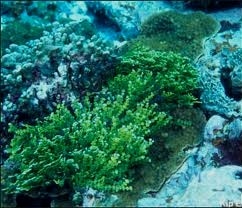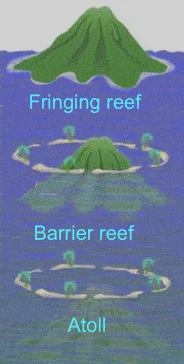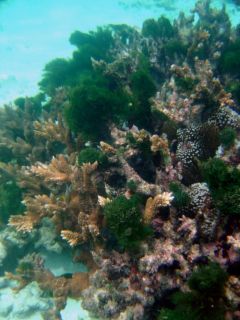Coral Reef Algae
Coral reef algae (along with all other algae) are the most primitive of plants, without the organization or structure of their terrestrial counterparts.
They have neither roots, stems, or true leaves, although some of the larger, multicellular forms have developed analogous structures that serve some of the same functions.
Various forms of marine algae are common in all portions of the marine environment sufficiently shallow to permit photosynthesis. This includes the surface layer of the open sea, as well as inshore waters harboring coral reefs.
algal ridge



